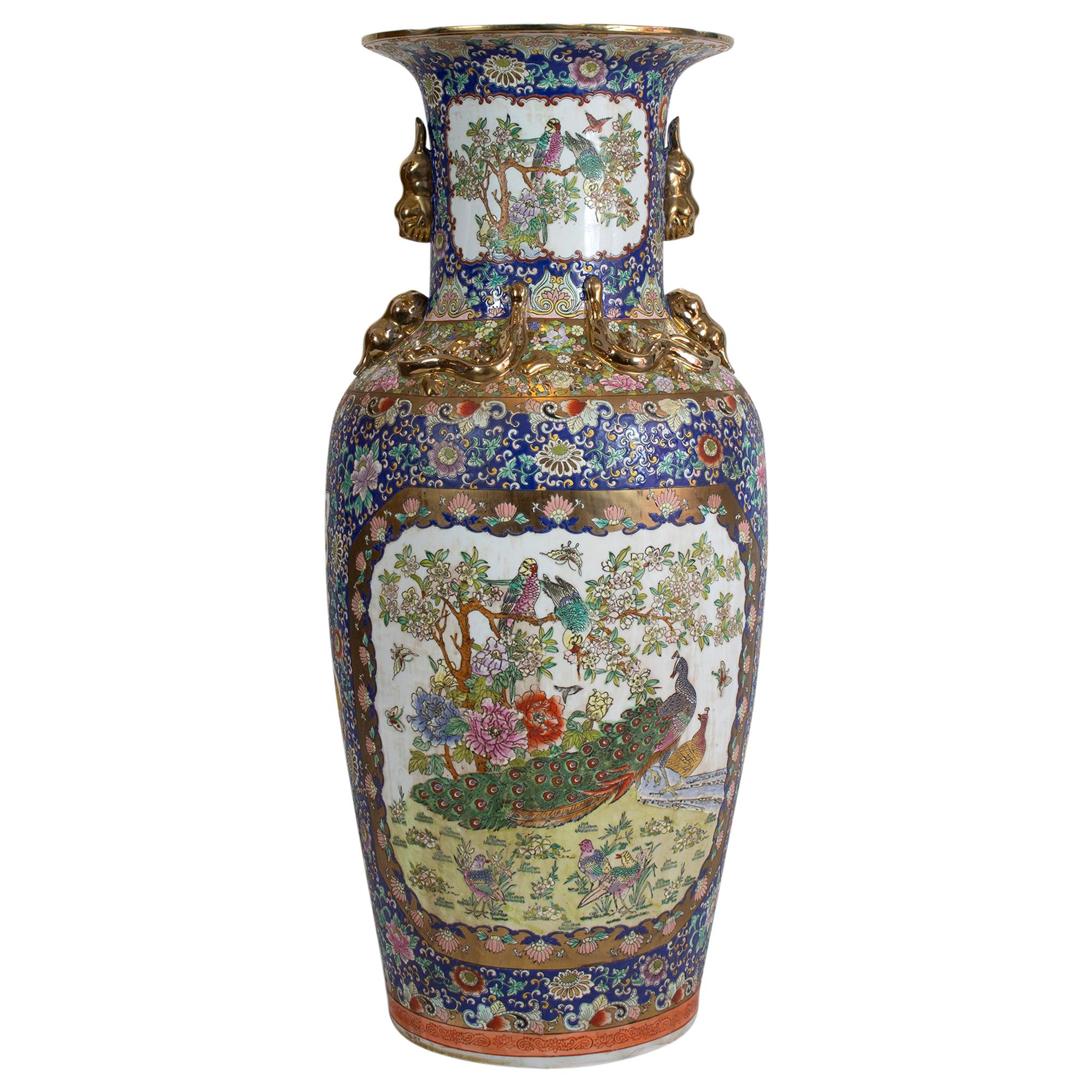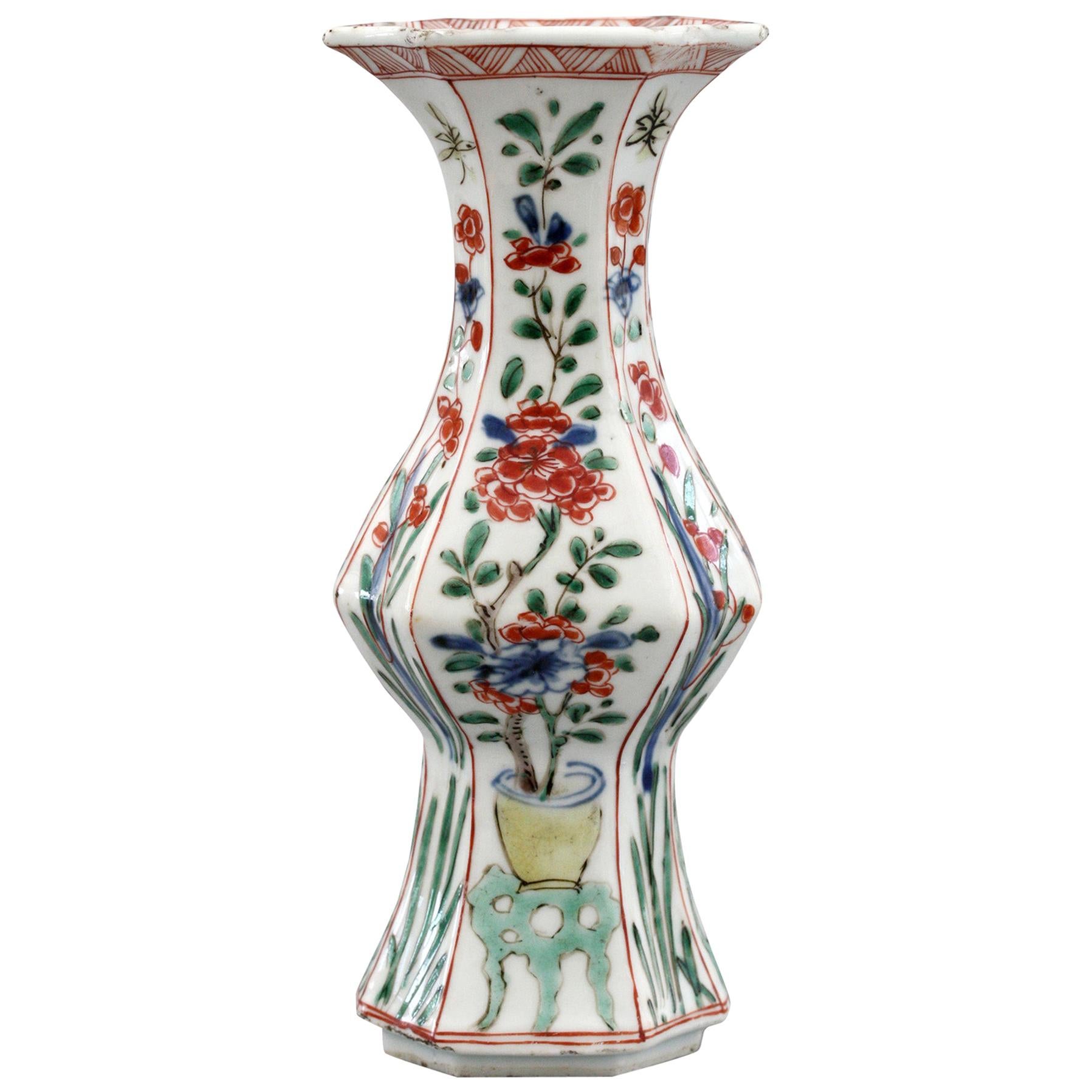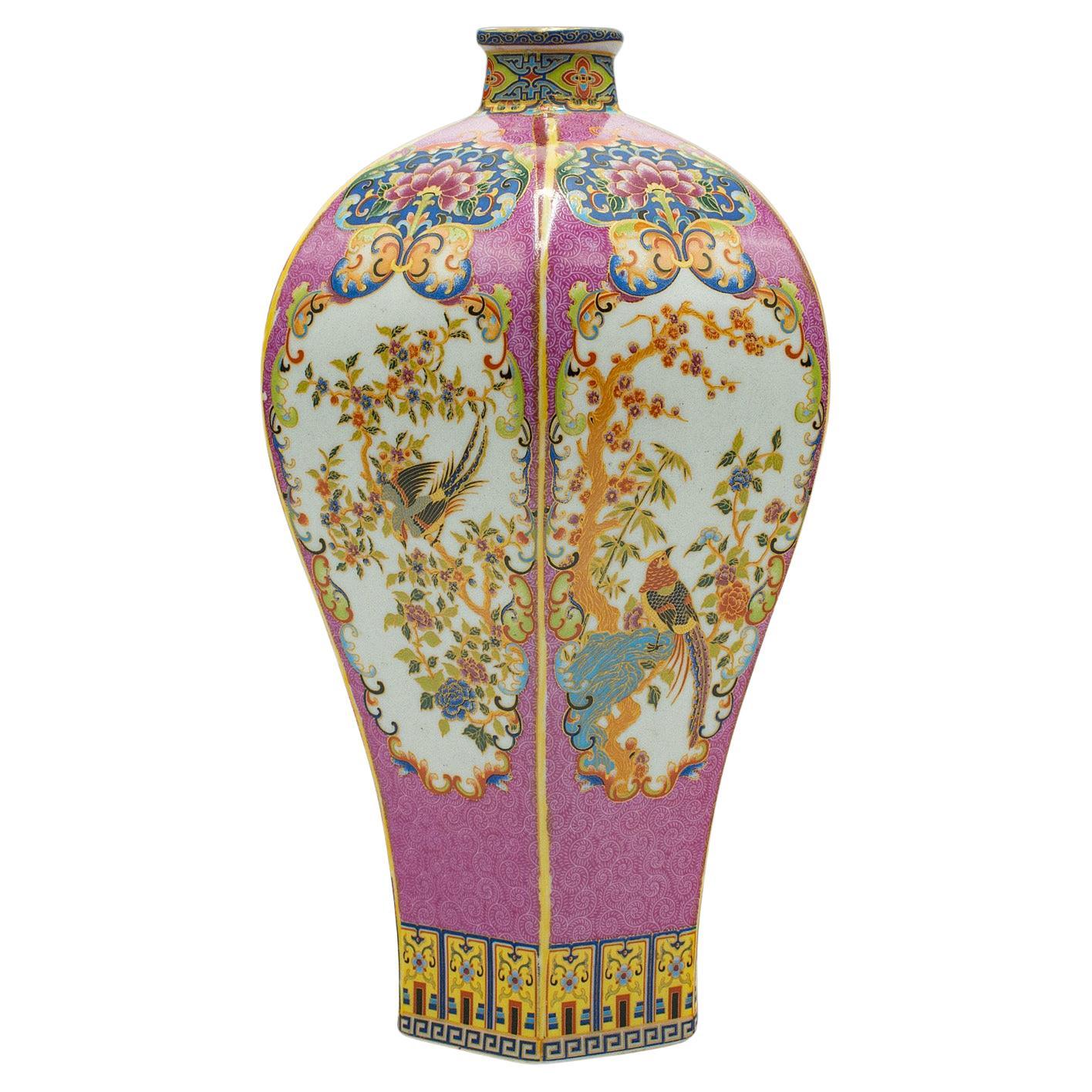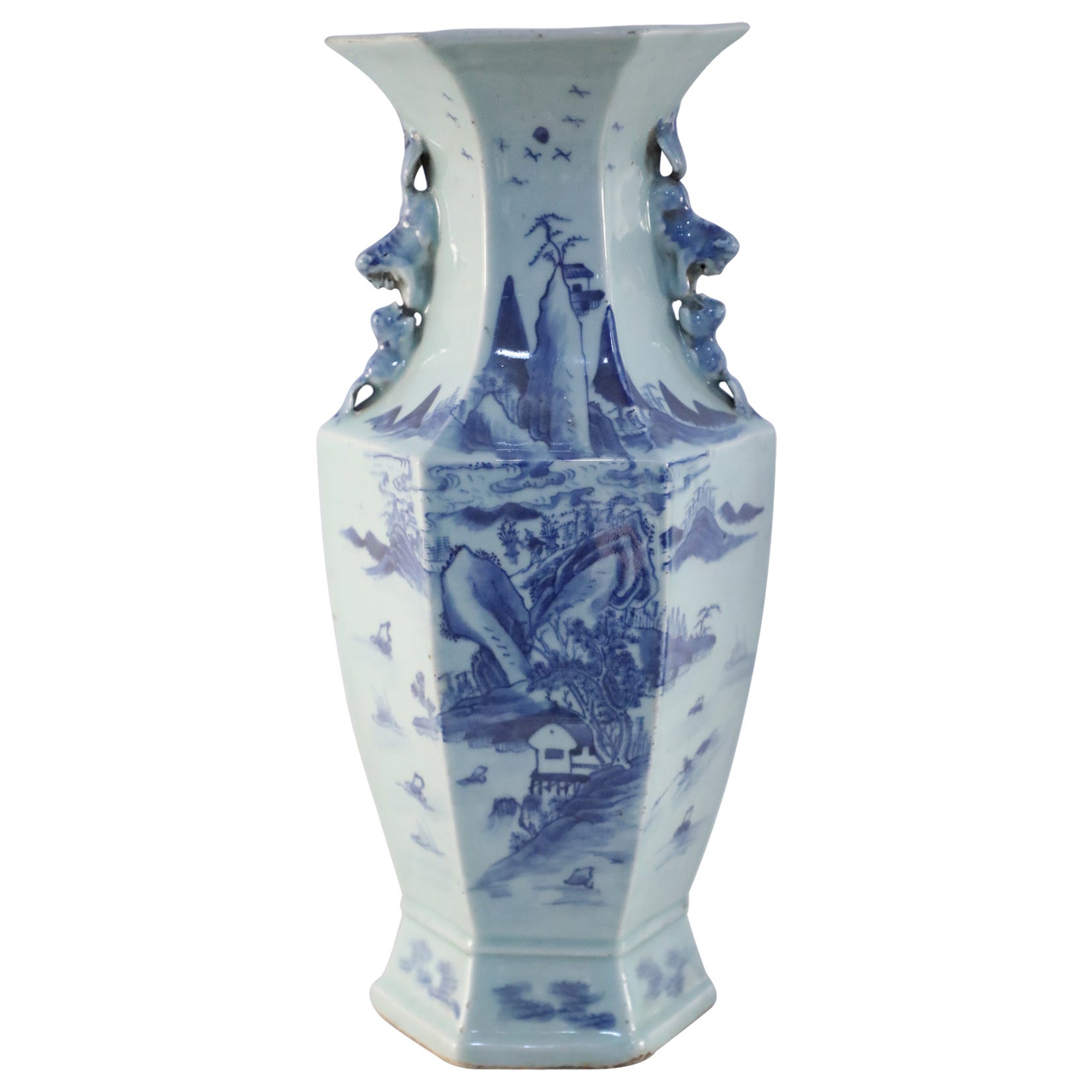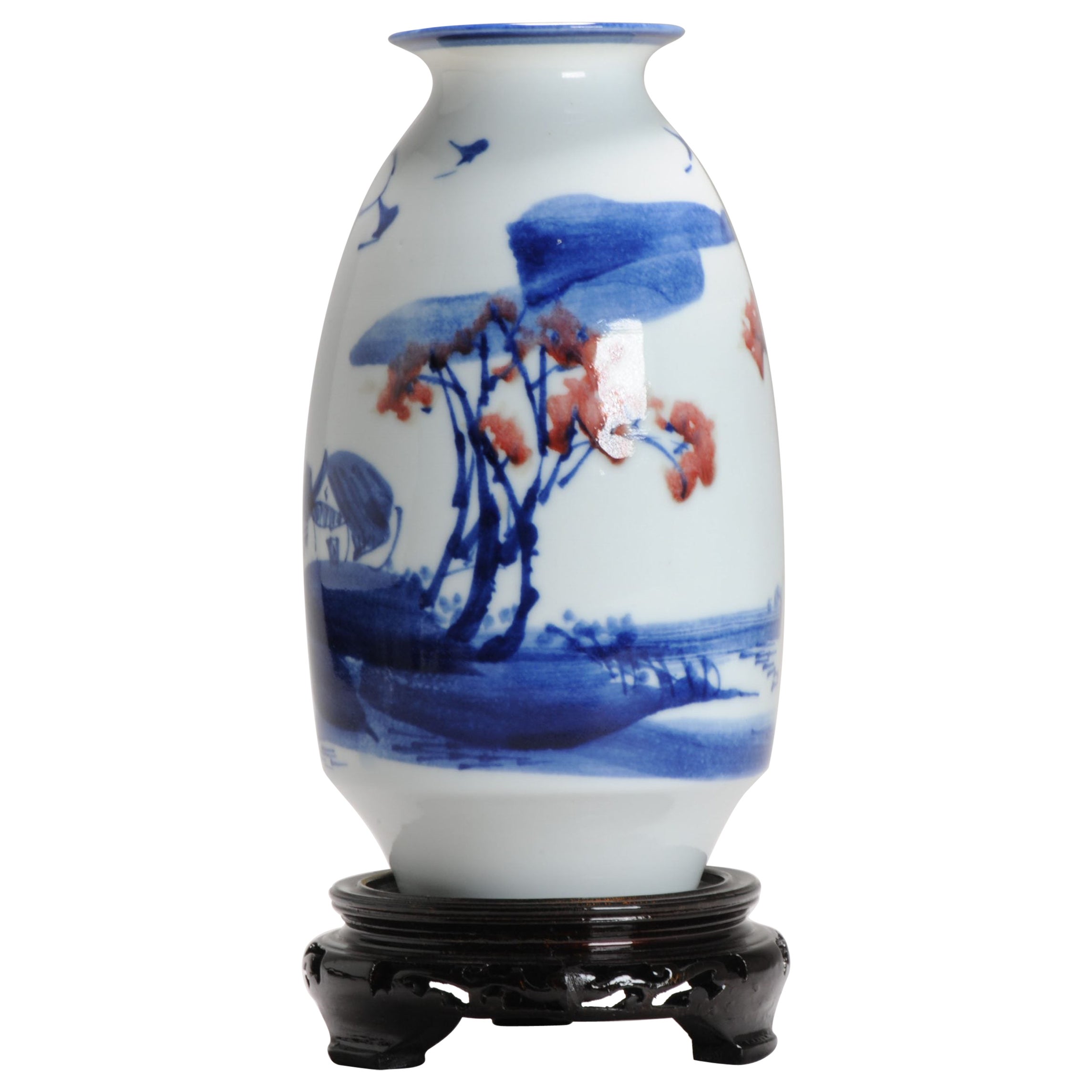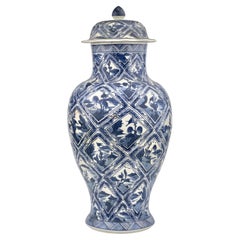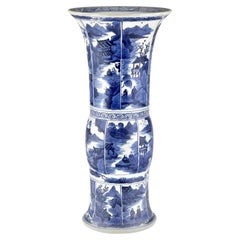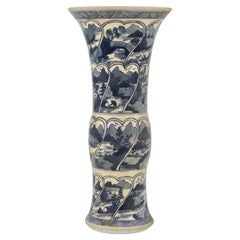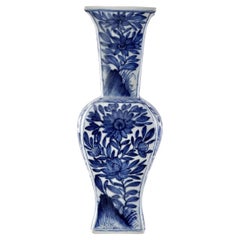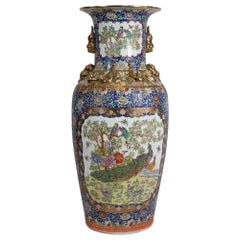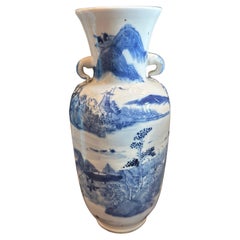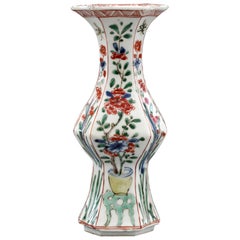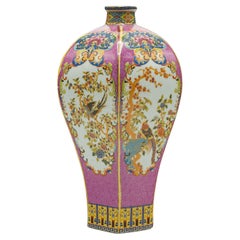Items Similar to Hexagonal Porcelain Vase with Landscape Decoration, Late Qing Dynasty
Want more images or videos?
Request additional images or videos from the seller
1 of 13
Hexagonal Porcelain Vase with Landscape Decoration, Late Qing Dynasty
$1,300
$2,00035% Off
£993.92
£1,529.1135% Off
€1,144.79
€1,761.2235% Off
CA$1,821.70
CA$2,802.6135% Off
A$2,033.76
A$3,128.8535% Off
CHF 1,065.66
CHF 1,639.4735% Off
MX$24,895.16
MX$38,300.2535% Off
NOK 13,533.86
NOK 20,821.3235% Off
SEK 12,760.71
SEK 19,631.8635% Off
DKK 8,543.72
DKK 13,144.1835% Off
Shipping
Retrieving quote...The 1stDibs Promise:
Authenticity Guarantee,
Money-Back Guarantee,
24-Hour Cancellation
About the Item
The vase has a hexagonal shape, with a structure that extends seamlessly from the rim to the base, creating a sense of visual stability. The neck features sculpted handles in the form of dragon heads or taotie motifs. The glaze is smooth and has a soft luster. Additionally, a minor crack is present near the rim.
The surface of the vase is adorned with a meticulously painted landscape scene. The artwork features towering blue mountain peaks, winding rivers, traditional houses, a boatman rowing on the water, and a shepherd guiding his ox, all of which idealize a peaceful and leisurely life in nature. One panel is inscribed with poetry in an elegant script, adding a literary and scholarly touch beyond mere decoration. The refined painting and sculpted ornamentation exemplify the exquisite artistry of late Qing Dynasty ceramics.
Period: Late Qing Dynasty
Type: Vase
Medium: Blue and White
Size : 33cm(Height) x 11.5cm(Mouth Diameter)
Condition: Excellent (Glaze Cracking on Mouth Part)
About the Seller
4.8
Gold Seller
Premium sellers maintaining a 4.3+ rating and 24-hour response times
Established in 1999
1stDibs seller since 2023
38 sales on 1stDibs
Typical response time: <1 hour
- ShippingRetrieving quote...Shipping from: seoul, Korea South
- Return Policy
Authenticity Guarantee
In the unlikely event there’s an issue with an item’s authenticity, contact us within 1 year for a full refund. DetailsMoney-Back Guarantee
If your item is not as described, is damaged in transit, or does not arrive, contact us within 7 days for a full refund. Details24-Hour Cancellation
You have a 24-hour grace period in which to reconsider your purchase, with no questions asked.Vetted Professional Sellers
Our world-class sellers must adhere to strict standards for service and quality, maintaining the integrity of our listings.Price-Match Guarantee
If you find that a seller listed the same item for a lower price elsewhere, we’ll match it.Trusted Global Delivery
Our best-in-class carrier network provides specialized shipping options worldwide, including custom delivery.More From This Seller
View AllLarge Rare 'Riverscapes' Pattern Baluster Vase, Qing Dynasty, Kangxi, circa 1690
Located in seoul, KR
Large rare vase painted with petal-shaped panels of riverscapes pattern.
Period : Qing Dynasty, Kangxi Period
Production Date : 1690-1699
Made in : Jingdezhen
Destination : Netherland
Found/Acquired : Southeast Asia , South China Sea, Vung Tau...
Category
Antique 1690s Vietnamese Qing Antiquities
Materials
Ceramic
$6,493 Sale Price
35% Off
A Large Gu Vase from Vung Tau Ship, Qing Dynasty Kangxi Era, Circa 1690
Located in seoul, KR
Finely painted landscape scenes in vertical panels, depicting mountains, rivers, pavilions, arched bridges, and scholar figures in flowing robes. The scenes are rendered in varying d...
Category
Antique 17th Century Vietnamese Qing Antiquities
Materials
Ceramic, Porcelain
$4,900 Sale Price
30% Off
Ancient Gu Shape 'Riverscapes' vase, Qing Dynasty, Kangxi era, Circa 1690
Located in seoul, KR
An attractive GU vase hand painted in cobalt blue with typical kangxi riverscape panels painting separated by lined borders. It is presumed that the surface turned yellow because it had been in the sea mud for a long time.
Period : Qing Dynasty, Kangxi Period
Production Date : 1690-1699
Made in : Jingdezhen
Destination : Netherland
Found/Acquired : Southeast Asia , South China Sea, Vung Tau...
Category
Antique 1690s Vietnamese Chinoiserie Vases
Materials
Ceramic
$1,943 Sale Price
35% Off
Yanyan Vase from Vung Tau Ship, Qing Dynasty Kangxi Era, Circa 1690
Located in seoul, KR
Each side pencil-painted with stylized chrysanthemum, lotus or daisy sprays issuing from rockwork. This blue and white square vase with rounded sides has a flaring mouth and a long neck. This shape can be traced back to Chinese bronzes. It is decorated with floral motifs on four sides in underglaze blue.
This piece was originally part of a pair, but the other has already been sold.
Period : Qing Dynasty, Kangxi Period(1690-1699)
Origin : Jingdezhen
Destination : Netherland
Found/Acquired : Southeast Asia , South China Sea, Vung Tau Ship
Reference : Double checked with reference to the original catalogues below
1) Christies Amsterdam 1992 - Vung Tau Cargo...
Category
Antique 17th Century Vietnamese Antiquities
Materials
Ceramic
$2,310 Sale Price
30% Off
Blue and White Baluster Vase, Qing Dynasty, Kangxi Era, Circa 1690
Located in seoul, KR
Spirally moulded and painted with bands of overlapping petal panels of figured riverscapes
Period : Qing Dynasty, Kangxi Period
Production Date : 1690-1699
Made in : Jingdezhen
Destination : Netherland
Found/Acquired : Southeast Asia , South China Sea, Vung Tau...
Category
Antique 1690s Vietnamese Chinoiserie Ceramics
Materials
Ceramic
$2,593 Sale Price
35% Off
A Wucai 'Peony' Vase Transitional Period, 17th century, Transitional Period
Located in seoul, KR
The jar features a balanced and robust form, typical of the Transitional period, which was a time of significant change and innovation in Chinese porcelain art. The decoration is exu...
Category
Antique 17th Century Hong Kong Qing Antiquities
Materials
Ceramic
$2,535 Sale Price
35% Off
You May Also Like
Large Chinese Floor Vase in the Style of the Qing Dynasty
Located in Darmstadt, DE
This large Chinese porcelain floor vase is crafted in the style of the Qing dynasty and was made in the 20th century. The impressive height of 108 cm (42.5 inches) and the richly det...
Category
20th Century Chinese Chinese Export Vases
Materials
Porcelain
$4,631 Sale Price
65% Off
Late Qing Period Traditional Blue and White Ceramic Chinese Vase
Located in Catania, Sicilia
This is a 19th-century traditional Chinese blue and white ceramic vase, a fine example of classic Qing Dynasty-style porcelain craftsmanship.Traditional blue cobalt underglaze on a w...
Category
Late 20th Century Chinese Chinese Export Vases
Materials
Ceramic
Chinese Kangxi Octagonal Famille Verte Floral Painted Porcelain Vase
Located in Bishop's Stortford, Hertfordshire
A scarce Chinese Kangxi porcelain octagonal yen yen vase decorated with vases containing floral arrangements in the Famille Verte palette and ...
Category
Antique 1690s Chinese Qing Ceramics
Materials
Porcelain
Antique Hexagonal Posy Vase, Chinese, Ceramic, Baluster Urn, Victorian, Qing
Located in Hele, Devon, GB
This is an antique hexagonal posy vase. A Chinese, ceramic baluster urn, dating to the late Victorian period, circa 1900.
A treat of fine colour and a fascinating hexagonal form
...
Category
Antique Late 19th Century Chinese Vases
Materials
Ceramic
Chinese Blue and White Hexagonal Porcelain Vase
Located in Queens, NY
Antique Chinese (Early 20th Century) blue and white hexagonal-shaped porcelain vase depicting a village scene and surrounding nature and accented with blue scroll handles at the neck...
Category
20th Century Chinese Chinese Export Vases
Materials
Porcelain
Vintage Hu Jie Chinese Porcelain PROC Liling Landscape Vase Underglaze, 1997
Located in Amsterdam, Noord Holland
Lovely Chinese porcelain vase. Underglaze Liling. Dating to 1990’s
Marked Base.
Additional information:
Material: Porcelain & Pottery
Decoration Type / Colour: Polychrome
Region of...
Category
20th Century Chinese Vases
Materials
Porcelain
More Ways To Browse
Qing Dynasty Vase
Antique Dragon Head
Qing Dynasty Painting
Ox Antique
Vase Qing Dynasty 19th Century
Blue Dragon Porcelain Vases
Hexagon Porcelain
Dragon Vase Ceramic
Asian Dragon Paintings
Antique Rowing
19th Century Vases With Dragon Handles
Luster Vases Antique
Qing Dynasty Blue And White Vase
Blue And White Hexagonal Vase
Japanese Tea Ceremony Ceramics
Antique Chinese Blue And White Porcelain Bowl
Ming Dragon
Asian Ceramic Pots
